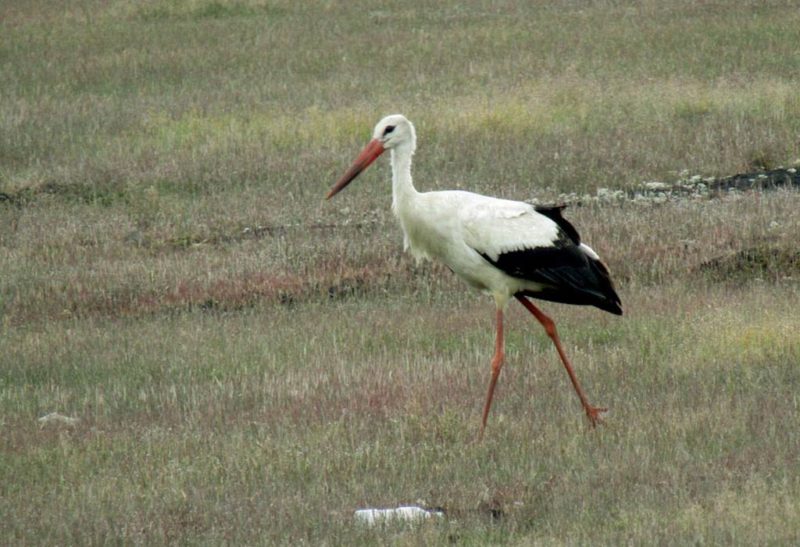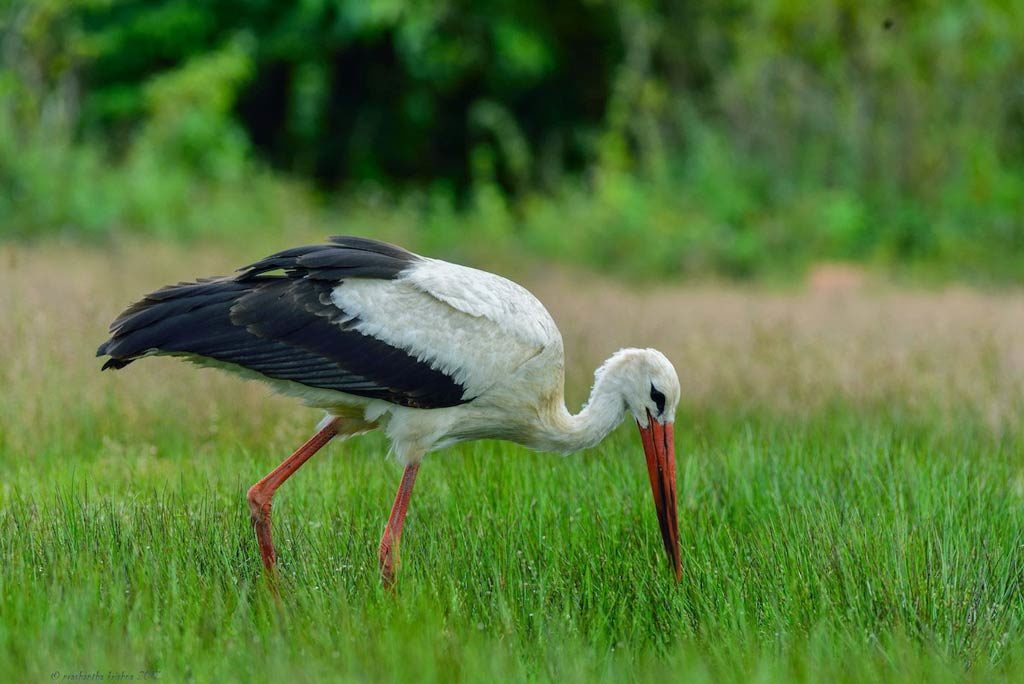Asingle stork was observed by Raju Kidoor on 13 October 2017 around 3:15 pm at a lateritic plateau region of Kidoor (12.62° N; 74.97° E), Kasaragod district. The bird was first mistaken to be Asian Openbill Anastomus oscitans, seen at a distance. Some photographs were taken by Raju Kidoor and referring the field guide (Grimmett et al. 2011) it was identified as a White Stork Ciconia ciconia. This stork is a widespread winter visitor and passage migrant to India. They are generally found singly or in flocks and are shy birds (Grimmett et al. 2011). Their IUCN status is least concern (LC) (BirdLife International, 2017). Usually, storks are seen around water bodies; though not a wetland, the lateritic area of Kidoor has many small and big natural ponds. The bird was observed searching food in the marshy edge of a pond ‘Kajoor Palla’ (Natural Pond). and was moving very slowly. It caught a big frog, probably an Indian bull frog Hoplobatrachus tigrinus. After eating the prey, the bird rested on one leg near ‘Kajoor Palla’ for some time. It roamed around the place till 6:15 pm before flying to the west towards the Shiriya river.

This is the first record of this species from Kasaragod district (Raju Kidoor, 2017). Recently a flock of 10 White Storks was reported in Manipal, Udupi district of Karnataka, which is about 110 km north of Kasaragod (Tejasvi S Acharya, 2017).
Reference
- BirdLife International (2017) Species factsheet: Ciconia ciconia. Downloaded fromhttp://www.birdlife.org on 25/10/2017
- Grimmettt et al., 2011. The Birds of Indian subcontinent second edition
- Raju Kidoor., 2017. Website URL: http://ebird.org/ebird/view/checklist/S39930009. (Accessed on 1 September 2018)
- Tejasvi S Acharya., 2017. Website URL: http://ebird.org/ebird/india/view/checklist/S39513604. (Accessed on 1 September 2018)
